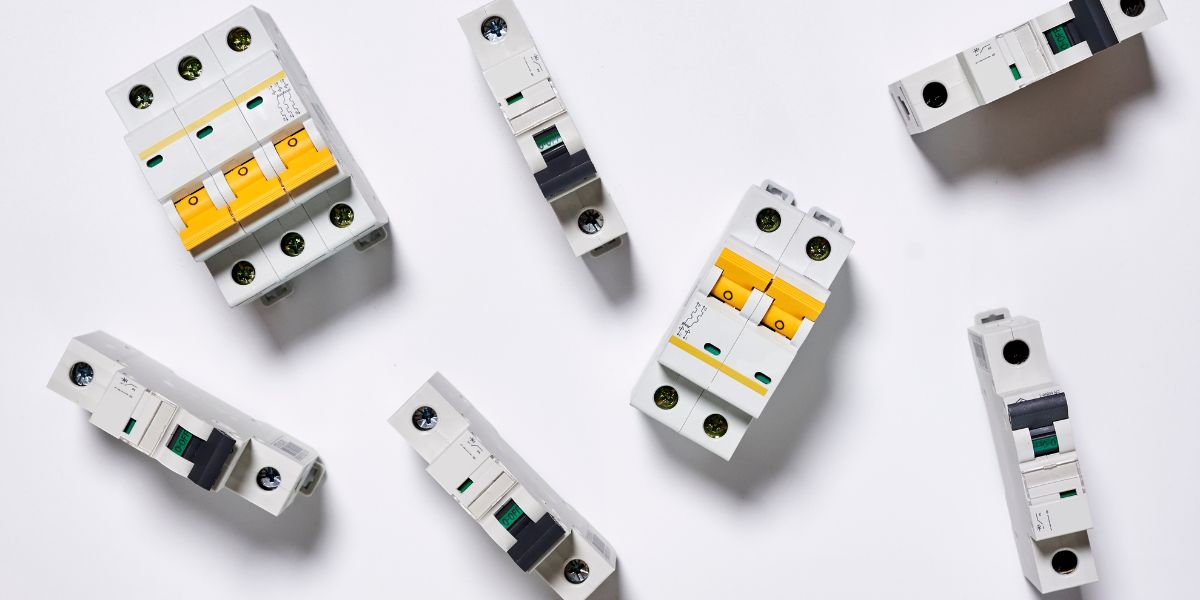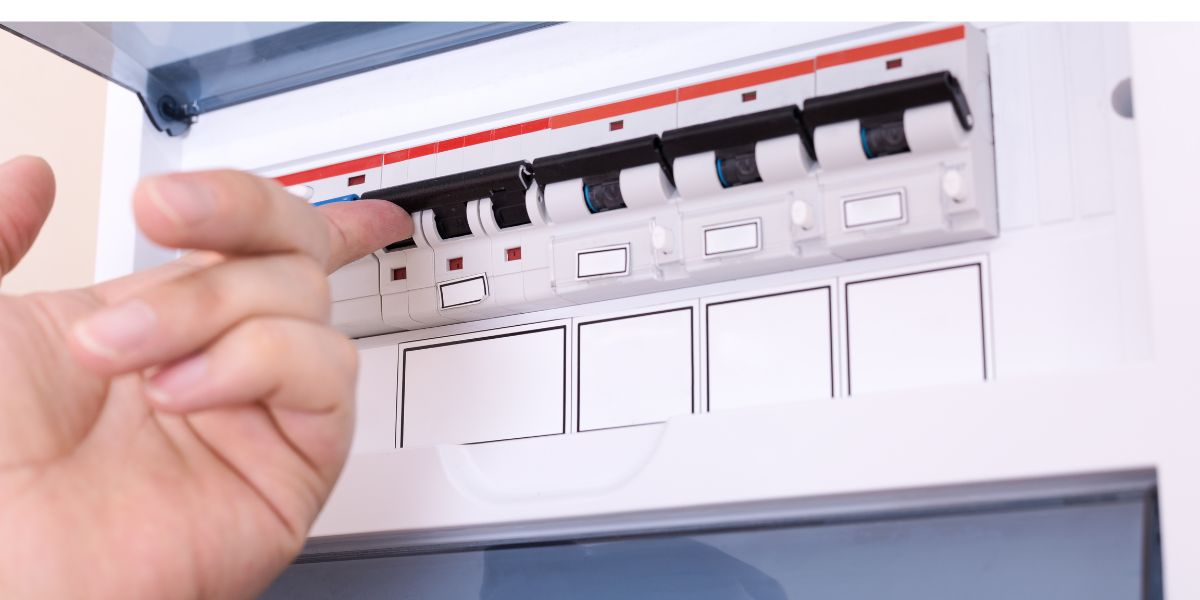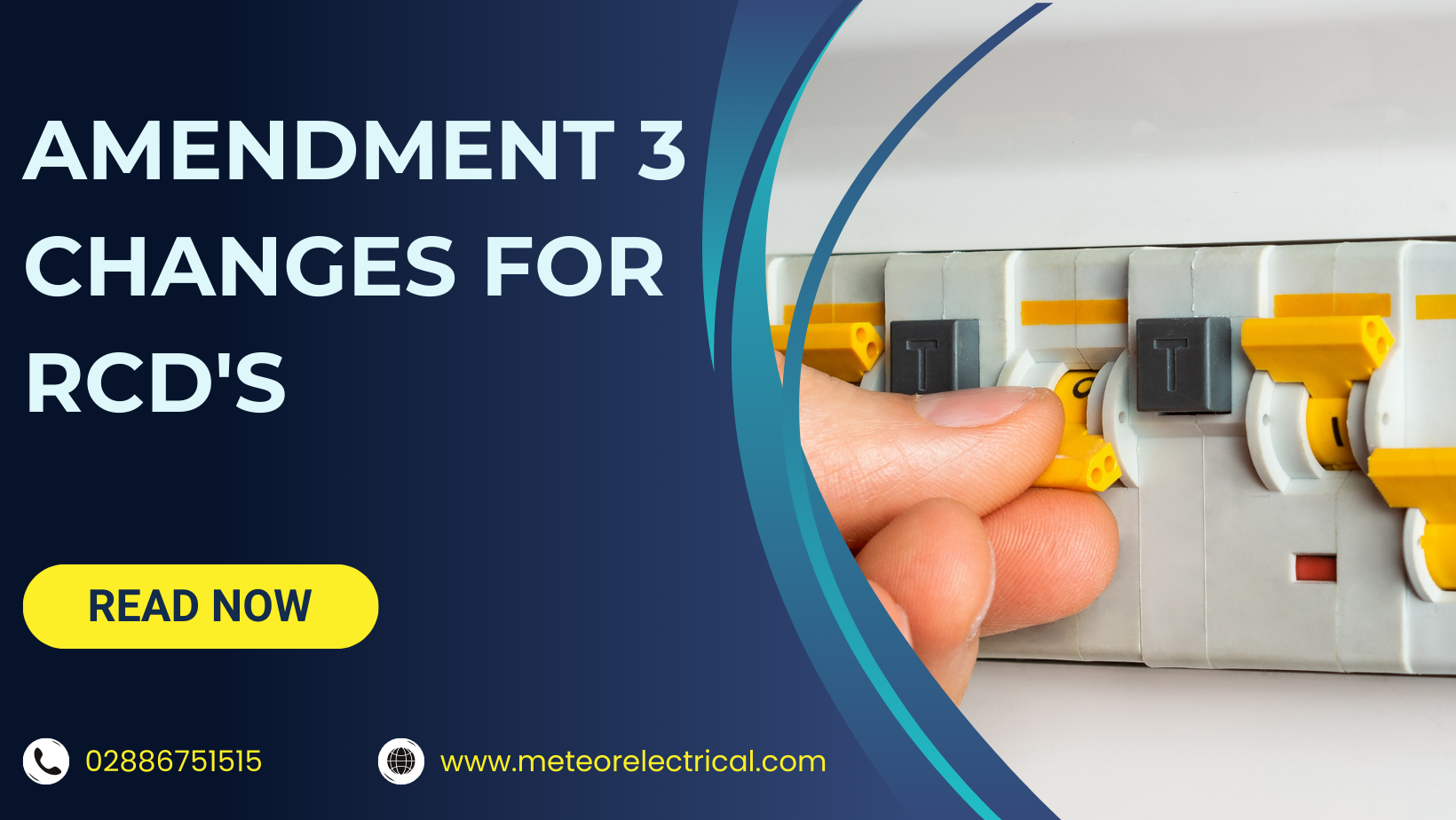What Changed with RCDs in Amendment 3? A Deep Dive into the Latest Electrical Safety Regulations

In the ever-evolving landscape of electrical safety, staying updated with the latest regulations is not just a matter of compliance—it’s a commitment to ensuring the safety of homes and workplaces. Whether you're an experienced electrician or a DIY enthusiast, the changes introduced by Amendment 3 to the BS 7671 Wiring Regulations, particularly regarding Residual Current Devices (RCDs), are essential to understand. These updates reflect advancements in safety technology and aim to set new, higher standards for electrical installations across the UK.
Credit: eFIXX
The Evolution of RCD Regulations

Residual Current Devices (RCDs) have come a long way since their early days, evolving alongside technological advancements to meet growing safety demands. Initially designed to protect people from electric shocks, RCDs have now become integral in preventing electrical faults that could lead to devastating fires. With Amendment 3, the journey of RCDs continues, introducing enhanced safety standards that address the emerging challenges in today’s electrical landscape. These changes are particularly crucial as they ensure that safety measures keep pace with technological progress and the growing complexity of electrical systems.
What’s New in Amendment 3?
Let’s break down the key changes introduced by Amendment 3, focusing on the practical implications for anyone involved in electrical installations.
| Category | Amendment 3 Changes | Importance |
|---|---|---|
| RCD Selection | Type AC RCDs are limited to fixed equipment with no DC components. Type A RCDs recommended for general use. | Ensures reliable operation and safety in diverse electrical environments. |
| Arc Fault Detection Devices (AFDDs) | Mandatory in high-risk installations like HMOs, care homes, and student accommodations. | Enhances fire safety by detecting dangerous electrical arcs. |
| Overvoltage Protection | Protection against transient overvoltages is required where the risk justifies the cost. | Prevents damage to critical systems and reduces the risk of catastrophic failures. |
| Testing and Inspection | Updated protocols for insulation resistance and RCD testing. | Ensures accuracy and reliability in maintaining high safety standards. |
| Prosumers Electrical Installations | New guidelines for entities that both produce and consume electricity, integrating smart grid systems. | Promotes safe, sustainable, and efficient use of electricity in modern installations. |
| Smart Technology Integration | Provisions for integrating RCDs with smart technology for monitoring, remote testing, and diagnostics. | Increases control and safety through advanced features and real-time data. |
Diverse Types of RCDs: Choosing the Right One
One of the standout changes in Amendment 3 is the refined guidelines on the use of different types of RCDs. Regulation 531.3.3 now clearly states that Type AC RCDs should be limited to fixed equipment where the load current has no DC components. This distinction is crucial because Type AC RCDs can struggle—and potentially fail—when dealing with residual DC, which could lead to hazardous situations. For most general applications, Type A RCDs are now the recommended choice as they can handle both AC and pulsating DC components. This change underscores the importance of selecting the appropriate RCD type to ensure reliable protection.
Mandatory Use of RCBOs for Enhanced Safety
Amendment 3 places a stronger emphasis on the use of Residual Current Breakers with Overcurrent (RCBOs) for each final circuit, particularly in residential settings. This update is all about minimising unwanted tripping, which can be both inconvenient and potentially dangerous. By installing an RCBO for each circuit, you ensure that a fault in one circuit doesn’t take down the entire consumer unit. This not only enhances safety but also improves the reliability of the electrical system by keeping unaffected circuits operational.
Protection Against Overvoltage: A Safety Must
While overvoltage protection has always been a key consideration, Amendment 3 reinforces its importance. Regulation 443.4.1 now mandates that protection against transient overvoltages must be provided in situations where failure could result in serious injury, loss of life, or significant financial or data loss. This is particularly relevant in today’s digital age, where data integrity is critical. Installing Surge Protective Devices (SPDs) in single-unit dwellings is now required when the potential damage justifies their cost, ensuring that crucial systems like fire alarms are protected from overvoltage damage.
Arc Fault Detection Devices (AFDDs): A New Layer of Protection
One of the most significant updates in Amendment 3 is the expanded requirement for Arc Fault Detection Devices (AFDDs). These devices detect dangerous electrical arcs that could cause fires and are now mandatory in specific high-risk installations. This includes higher-risk residential buildings, houses in multiple occupations (HMOs), purpose-built student accommodations, and care homes. By making AFDDs compulsory in these environments, Amendment 3 aims to significantly reduce the risk of electrical fires, providing an essential layer of protection in settings where safety is paramount.
Credit: eFIXX
Expanded Scope and Enhanced Earthing Regulations

Amendment 3 doesn’t just stop at revising RCD requirements; it also broadens the scope of RCD protection across various settings. Previously, RCD protection was required only in specific circuits or environments. Now, this requirement has been extended to additional areas within both residential and commercial settings. This comprehensive approach is designed to provide enhanced safety across a wider range of environments, reducing the risk of electrical hazards.
In addition, Amendment 3 introduces new earthing regulations that focus on the inclusion of foundation earth electrodes in premises where automatic disconnection is the primary protective measure. These regulations provide clear guidelines on the implementation and maximum resistance values for these electrodes, further enhancing the overall safety of electrical installations.
Part 8 Addition: Prosumers Electrical Installations

Part 8 is a new section introduced in the regulations, focusing on "Prosumers Electrical Installations." This section addresses the unique needs of entities that both produce and consume electricity, commonly referred to as prosumers. It emphasises the safe operation, sustainability, and efficient use of electricity within smart grid systems. This addition is a significant step towards integrating renewable energy sources and modern technology into the regulatory framework, supporting the transition to a more sustainable and resilient energy system.
Testing and Inspection
Amendment 3 brings updates to the protocols for insulation resistance testing, introducing specific procedures for installations with equipment that might influence test results. It also standardises RCD testing procedures, ensuring consistent and reliable verification across different types of RCDs. These updates are vital for maintaining high safety standards and ensuring the accuracy and reliability of testing results in all electrical installations.
Integration with Smart Technology
Recognising the increasing adoption of smart systems, Amendment 3 includes provisions for integrating RCDs with smart technology. This integration enables advanced features such as real-time monitoring, remote testing, and diagnostics, significantly enhancing the safety and efficiency of electrical installations. By embracing smart technology, both electricians and consumers can enjoy greater control and improved safety in their electrical systems.
Implications for Electricians and DIY Enthusiasts

Compliance and Legal Obligations
Adhering to Amendment 3 is not just a recommendation—it’s a legal requirement. Failing to comply can lead to significant fines and potentially voided insurance coverage, making it crucial for electricians and DIY enthusiasts to stay informed. This amendment ensures that all electrical installations meet the highest safety standards, protecting both the installer and the end user. Regularly updating knowledge and practices in line with these changes is essential for ensuring that every installation is both legally compliant and safe.
Enhanced Safety and Risk Mitigation
The changes introduced in Amendment 3 can greatly enhance safety standards. Electricians and DIY enthusiasts can significantly reduce the risk of electrical accidents by following the updated guidelines for RCD selection, installation, and testing. These updates are specifically designed to prevent electrical faults that could lead to shocks or fires, creating a safer environment for everyone. The improved safety measures ensure that electrical systems are more reliable and less likely to experience dangerous failures.
Educational Opportunities
Amendment 3 also opens up valuable opportunities for continuous learning and professional development. Introducing new technologies and regulations allows electricians to expand their expertise through specialised training programs. These programs focus on the latest advancements in RCD technology and installation practices, offering practical insights and hands-on experience. Staying current with these educational opportunities ensures compliance and enhances professional competence and competitiveness in the industry.
By embracing these learning opportunities, electricians can stay ahead of industry developments, providing their clients with the highest standards of safety and efficiency. This commitment to continuous learning benefits individual professionals and raises the overall safety standards within the electrical industry.
Conclusion
Amendment 3 to the BS 7671 Wiring Regulations marks a significant step forward in electrical safety. The updates, including refined RCD selection criteria and the mandatory use of Arc Fault Detection Devices (AFDDs) in high-risk areas, address modern safety challenges and set higher standards for both professionals and DIY enthusiasts.
Compliance with these regulations is essential to avoid legal repercussions and to ensure safer environments. Additionally, these updates provide electricians with opportunities for professional growth, helping them stay current with industry standards. DIY enthusiasts also benefit by ensuring their home projects are safe, reliable, and up to code.
To implement these changes effectively, it’s crucial to use high-quality components. Meteor Electrical offers a wide range of RCDs and other consumer unit components that meet the latest standards. Choosing Meteor Electrical ensures that your installations are equipped with top-notch products, enhancing both safety and performance.
For more information on high-quality RCDs and other electrical components, visit Meteor Electrical.
FAQs
1. What are the key changes introduced by Amendment 3 to the BS 7671 Wiring Regulations?
Amendment 3 includes refined guidelines for RCD selection, mandatory use of Arc Fault Detection Devices (AFDDs) in high-risk areas, and updated protocols for testing and inspection. It also introduces new regulations for prosumers’ electrical installations and the integration of smart technology with RCDs.
2. Why is it important to comply with Amendment 3 when installing RCDs?
Compliance with Amendment 3 is legally required and essential for ensuring the safety and reliability of electrical installations. Non-compliance can lead to significant legal penalties and invalidate insurance coverage.
3. How do the new regulations affect the selection of RCDs?
The new regulations specify that Type AC RCDs should be used only for fixed equipment with no DC components, while Type A RCDs are recommended for general use as they handle both AC and pulsating DC components.
4. What benefits does integrating RCDs with smart technology offer?
Integrating RCDs with smart technology allows for advanced features like real-time monitoring, remote testing, and diagnostics, which enhance the safety, efficiency, and control of electrical systems.
5. Are Arc Fault Detection Devices (AFDDs) now mandatory in all installations?
AFDDs are mandatory in specific high-risk installations such as higher-risk residential buildings, HMOs, student accommodations, and care homes, as part of Amendment 3’s focus on fire prevention and safety.

